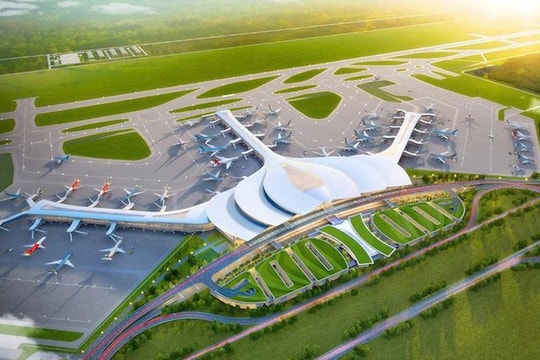Dubai's giant palm-shaped artificial islands are a symbol of the land's unimaginable possibilities.
 |
| Dubai has been transformed from a small coastal fishing village into a modern city. However, the UAE government is well aware of the unsustainability of oil-fueled development. Sheikh Mohammed bin Salman, the ruler of Dubai, has spent more than two decades transforming the city into a world-class destination that can survive without the need for “black gold”. Photo: Conference.city. |
 |
| However, Dubai’s geography poses a significant obstacle to this development project: the entire emirate has only 60 km of coastline. The huge skyscrapers and hotels along the water’s edge form a giant wall. Photo: Educate Plus. |
 |
| The problem was how to get hundreds of kilometers of extra coastline. Dubai solved this problem by building three of the world's largest artificial islands. Photo: Travel & Leisure |
 |
| In 1993, Dubai began building its first artificial island - where the Burj Al Arab, the famous 7-star hotel, is located. This unique structure stands out among the surrounding skyscrapers. Its location 280 meters from the shore means the tower's shadow does not affect nearby resorts. Photo: Booking. |
 |
| The success of the Burj Al Arab sparked a bold plan for Dubai: to build a giant archipelago. Sheikh Mohammed came up with the idea of a palm tree shape to maximize the beachfront real estate. The smallest palm branch is nearly 1.5 km long with houses on both sides. Photo: Eikongraphia. |
 |
| Nakheel is responsible for the development of the palm islands. The smaller Palm Jumeirah had its first residents in 2007. The Palm Jebel Ali is complete. The largest, Palm Deira, is still being reclaimed from the sea. Photo: Thousandwonders. |
 |
| Construction of the palm islands began in 2001. Divers surveyed the seabed and workers erected a crescent-shaped rock breakwater. The bottom of the breakwater is a layer of sand covered with waterproof geotextile to prevent erosion. One-ton rocks were placed on the sand bed. Photo: Archirodon. |
 |
| On top are two layers of boulders, each weighing 6 tons. The breakwater will protect the island from storms and harsh weather. Photo: My Travel Blog. |
 |
| The palm islands themselves are built from sand dredged from the seabed. Palm Jumeirah was built from 94 million cubic meters of sea sand. Photo: Hi-Shelter. |
 |
| To create the shape according to the design, contractors used a Differential Global Positioning System (DGPS). Sand was compressed into place and fixed with millions of tons of rock. Photo: Guiderepublic. |
 |
| Palm Jumeirah is now packed with villas and hotels, connected to the mainland by a six-lane undersea tunnel. The island has added 78 km of coastline to Dubai. Photo: Skift. |
 |
| Palm Jebel Ali began construction in 2002, but has been delayed several times and is now considered a “long-term project”. When completed, Palm Jebel Ali will be twice the size of Palm Jumeirah. Photo: RAU. |
 |
| The Palm Deira project, eight times the size of Palm Jumeirah, was announced in 2004. However, the project was later changed to the Deira archipelago, consisting of four small islands. At the end of 2018, the Night Souk - the world's largest night market - with more than 5,000 stalls, nearly 100 restaurants and cafes will be in operation. Photo: Al Bawaba. |
 |
| Nakheel has taken steps to minimize the environmental impact of its artificial island construction, but the massive projects have had a significant impact. The massive amounts of sand dredged to build the islands have changed the waves, temperatures, and erosion patterns in the Persian Gulf. At the same time, many coral reefs have been destroyed. Photo: Google Sites. |
According to Zing


















